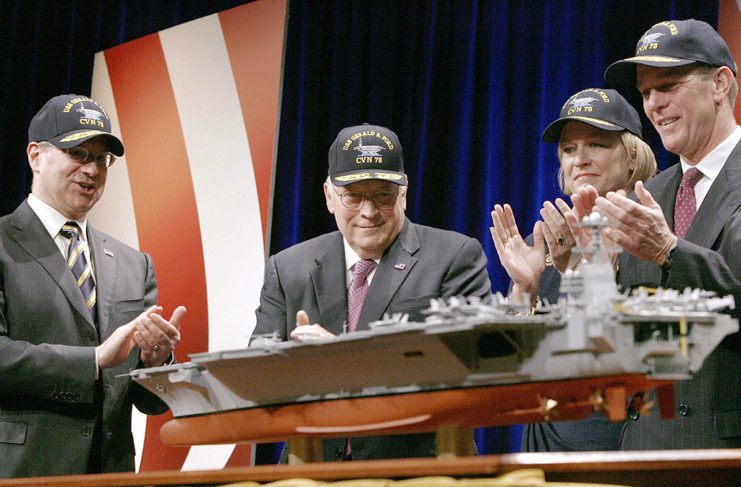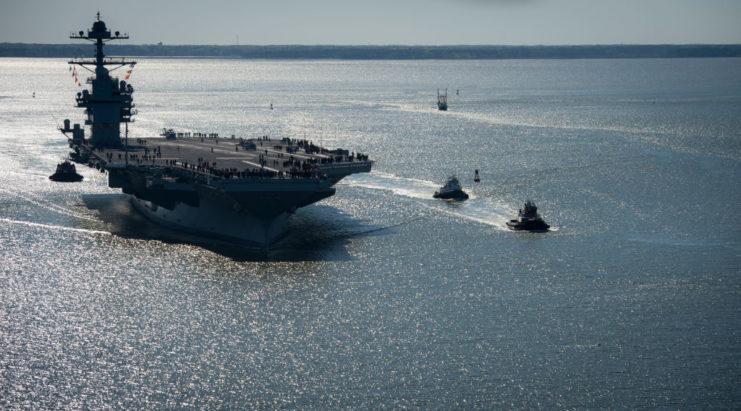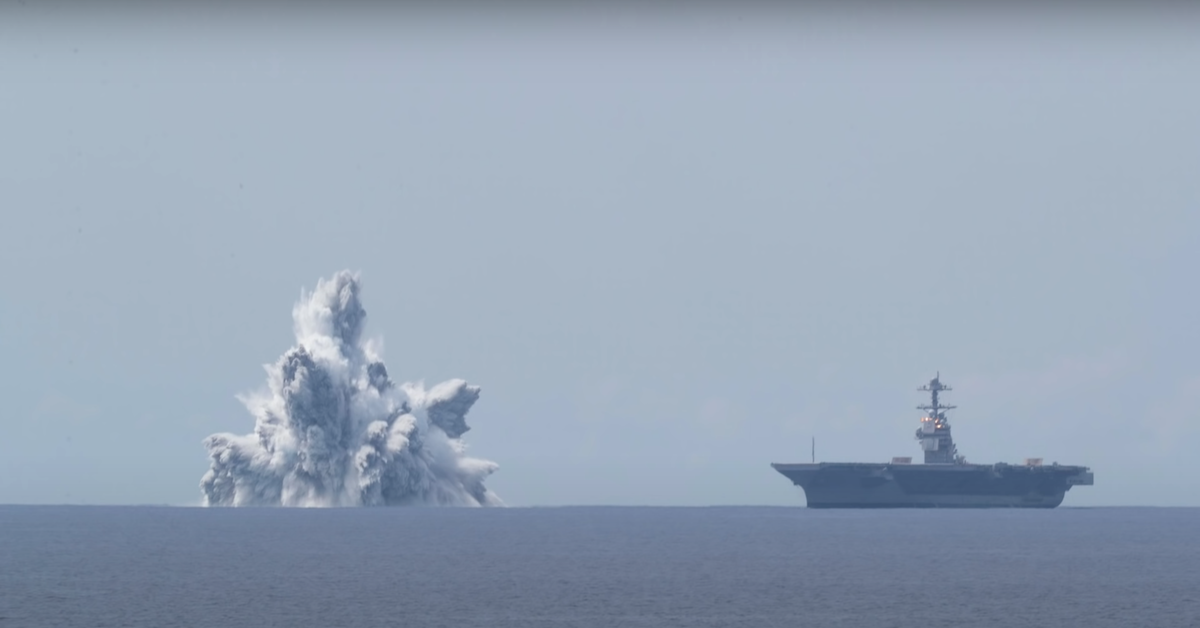The U.S. Navy is preparing its newest and most expensive aircraft carrier, the USS Gerald R. Ford (CVN 78), for battle. It recently completed a test aimed at simulating how the ship will perform in battle-like conditions, and the results appear promising.
A new class of aircraft carrier
Development of the USS Gerald R. Ford began during former President George W. Bush’s administration. It features new technologies aimed at making it more effective during battle, including an electromagnetic launch system that replaced the traditional steam-powered catapult.

Testing is required before the carrier can be employed and was ordered by then-Deputy Secretary of Defense Robert O. Work in 2015. Initially scheduled for 2019, the Navy requested the trials be delayed at least six years, until the delivery of the second-in-class USS John F. Kennedy (CVN-79) in 2024.
However, in February 2018, the leaders of the Senate Armed Services, including late Senator John McCain (R-Arizona), urged former Secretary of Defense Jim Mattis to not delay testing the $12.9 billion aircraft carrier.
Explosive testing
The first scheduled explosive test for the USS Gerald R. Ford occurred on June 18, 2021, 100 miles off the coast of Florida. It involved 40,000 pounds of explosives, with sensors measuring the effects of shock on the carrier. According to the U.S. Geological Survey, the resulting blast registered as a 3.9 magnitude earthquake on their systems.
The testing follows an 18-month Post Delivery Test & Trials period that finished up in April 2021. During this time, crews completed required testing, training, and ship maintenance while learning how to better increase the reliability of Ford-class systems. The ship also served as the sole east coast platform for conducting carrier qualifications.
In a press release, the U.S. Navy said they were following protocol to ensure those involved in the testing were safe, and the trials are being conducted in accordance with the Office of the Chief Naval Operations Instruction 9072.2, as mandated by the National Defense Authorization Act of 2016.
Ever wonder what a 40,000 pound explosive looks like from the bridge wing of a @USNavy aircraft carrier?
Watch footage from #USSGeraldRFord's first explosive event of Full Ship Shock Trials and find out! 🤯#ThisIsFordClass #WeAreNavalAviation #Warship78 pic.twitter.com/2kbeEkF0g1
— USS Gerald R. Ford (CVN 78) (@Warship_78) June 20, 2021
The statement went on to say the shock trials are being conducted “within a narrow schedule that complies with environmental mitigation requirements, respecting known migration patterns of marine life in the test area.”
Next steps
The U.S. Navy has conducted several FSSTs over the decades with combat ships, amphibious assault ships, and amphibious docks. The last one done on an aircraft carrier occurred in 1987 with the USS Theodore Roosevelt (CVN-71).
“The first-in-class aircraft carrier was designed using advanced computer modeling methods, testing and analysis to ensure the ship is hardened to withstand battle conditions, and these shock trials provide data used in validating the shock hardness of the ship,” the Navy said.

More from us: Families Aren’t Happy With Plans Not To Identify 85 USS Arizona Crewmen
Three tests are currently scheduled, but the Navy does have the ability to cap them at two. Once the shock trials are complete, the USS Gerald R. Ford will enter into a six-month period of Planned Incremental Availability. During this time, it will undergo repairs, maintenance, and modernization to ensure it’s fully operational for deployment.
